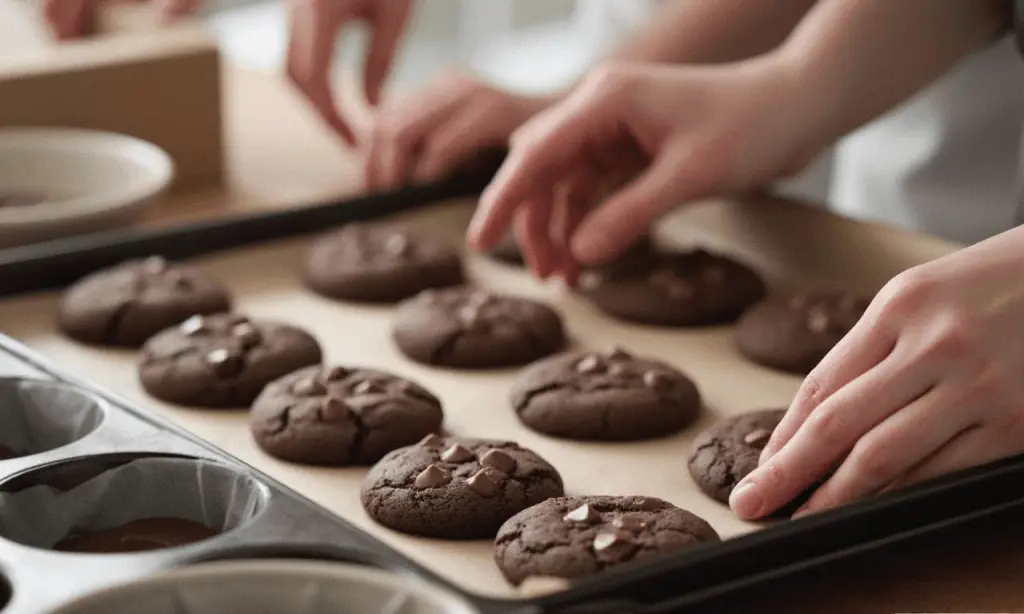Gluten-Free Baking: Tips and Recipes for Beginners
Gluten-free baking has become increasingly popular, whether due to dietary restrictions, gluten intolerance, or simply a desire for healthier alternatives. While it may seem intimidating at first, gluten-free baking can be just as enjoyable and delicious as traditional baking with the right techniques and ingredients. If you're new to gluten-free baking, this guide will provide essential tips and beginner-friendly recipes to help you get started.

Understanding Gluten-Free Baking
Gluten is a protein found in wheat, barley, and rye that gives baked goods their structure and elasticity. When baking without gluten, you need alternative ingredients to achieve a similar texture and taste. Gluten-free flours behave differently from wheat flour, so adjustments in measurements, binding agents, and baking techniques are necessary.
Essential Tips for Gluten-Free Baking
- Use a Gluten-Free Flour BlendInstead of relying on a single type of flour, use a blend of gluten-free flours such as rice flour, almond flour, tapioca flour, and potato starch. Many pre-mixed gluten-free flour blends are available in stores, making it easier for beginners to get started.
- Add a Binding AgentGluten provides elasticity in baked goods, so gluten-free recipes often require binders like xanthan gum, guar gum, or psyllium husk to hold everything together. These ingredients help prevent crumbling and improve texture.
- Increase MoistureGluten-free flours tend to absorb more liquid than wheat flour, making baked goods dry if not adjusted properly. Adding extra eggs, yogurt, applesauce, or milk can help retain moisture.
- Let the Batter RestAllowing the batter to sit for 20–30 minutes before baking helps hydrate the flour and improve the final texture. This step is particularly helpful for gluten-free pancakes, muffins, and bread.
- Don't Overmix the BatterUnlike wheat-based baking, where gluten development is important, overmixing gluten-free batter can result in dense or gummy textures. Mix only until the ingredients are combined.
- Use the Right Baking EquipmentLining baking trays with parchment paper and using non-stick pans can prevent sticking, which is more common in gluten-free baking. Also, using an oven thermometer ensures consistent baking temperatures.
Beginner-Friendly Gluten-Free Recipes
1. Easy Gluten-Free Banana Bread
This moist and flavorful banana bread is a perfect introduction to gluten-free baking.
Ingredients:
- 3 ripe bananas, mashed
- 2 eggs
- ½ cup brown sugar
- ¼ cup melted butter or coconut oil
- 1 teaspoon vanilla extract
- 1 ½ cups gluten-free all-purpose flour
- 1 teaspoon baking soda
- ½ teaspoon cinnamon
- ½ teaspoon salt
Instructions:
- Preheat the oven to 175°C (350°F) and grease a loaf pan.
- In a bowl, mix the mashed bananas, eggs, sugar, melted butter, and vanilla.
- In another bowl, whisk together the gluten-free flour, baking soda, cinnamon, and salt.
- Combine the dry ingredients with the wet ingredients, stirring gently until just mixed.
- Pour the batter into the loaf pan and bake for 50–55 minutes, or until a toothpick inserted in the center comes out clean.
- Let cool before slicing and serving.
2. Gluten-Free Chocolate Chip Cookies
These cookies are chewy, delicious, and easy to make!
Ingredients:
- 1 ½ cups gluten-free all-purpose flour
- ½ teaspoon baking soda
- ½ teaspoon salt
- ½ cup butter, softened
- ½ cup brown sugar
- ¼ cup granulated sugar
- 1 egg
- 1 teaspoon vanilla extract
- 1 cup chocolate chips
Instructions:
- Preheat the oven to 180°C (350°F) and line a baking sheet with parchment paper.
- In a bowl, whisk together the gluten-free flour, baking soda, and salt.
- In another bowl, beat the butter and sugars until creamy. Add the egg and vanilla extract.
- Gradually add the dry ingredients to the wet ingredients, mixing until combined.
- Fold in the chocolate chips.
- Drop spoonfuls of dough onto the baking sheet and bake for 10–12 minutes, or until golden brown.
- Let cool before serving.

3. Simple Gluten-Free Blueberry Muffins
These muffins are light, fluffy, and packed with juicy blueberries.
Ingredients:
- 1 ½ cups gluten-free all-purpose flour
- 1 teaspoon baking powder
- ½ teaspoon baking soda
- ½ teaspoon salt
- ½ cup granulated sugar
- ½ cup plain yogurt or buttermilk
- ¼ cup vegetable oil
- 2 eggs
- 1 teaspoon vanilla extract
- 1 cup fresh or frozen blueberries
Instructions:
- Preheat the oven to 180°C (350°F) and line a muffin tin with paper liners.
- In a bowl, mix the gluten-free flour, baking powder, baking soda, salt, and sugar.
- In another bowl, whisk together the yogurt, oil, eggs, and vanilla.
- Combine the wet and dry ingredients, stirring gently. Fold in the blueberries.
- Fill each muffin cup about ¾ full with batter.
- Bake for 18–20 minutes, or until a toothpick inserted in the center comes out clean.
- Let cool before enjoying.
Troubleshooting Common Gluten-Free Baking Issues
- Crumbly Texture: Add an extra egg or a tablespoon of xanthan gum to improve structure.
- Dry Baked Goods: Increase moisture by adding more liquid or using mashed fruits like bananas or applesauce.
- Gummy or Dense Texture: Ensure you’re using the right flour blend and avoid overmixing the batter.
- Flat Baked Goods: Make sure to use fresh baking powder and baking soda to help with proper rise.
Final Thoughts
Gluten-free baking can be easy and enjoyable with the right techniques. By understanding how gluten-free flours work and using simple adjustments, you can create delicious baked goods that taste just as good as their traditional counterparts. Start with these beginner-friendly recipes and explore more options as you gain confidence in your gluten-free baking skills!
Olivia
|
2025.03.31




